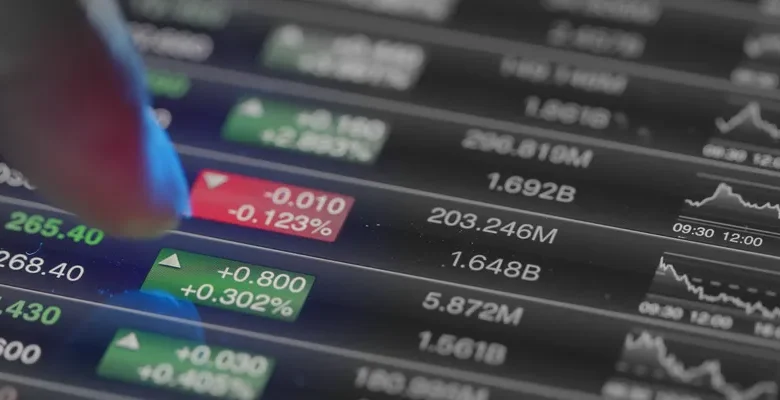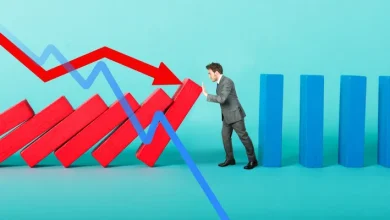Understanding the Trading Effect: Key Impacts and Strategies Explained

The “trading effect” broadly refers to the impact of trading activities on an asset’s price, portfolio performance, or broader market conditions. As financial markets grow more complex, understanding the trading effect is crucial for investors, portfolio managers, and individual traders alike. By grasping the different facets of the trading effect, market participants can better anticipate price fluctuations, manage risks, and make strategic decisions that align with their financial goals.
Read More: How to earn $1000 per day in Trading: Beginner’s Guide 2024-25
Key Impacts of the Trading Effect
- Price Volatility: The trading effect often drives short-term price fluctuations. High trading volume on a particular security, either from increased interest or speculative trading, can cause sharp price movements. For example, large buy or sell orders, often seen during news events or earnings reports, lead to increased volatility as the market reacts. In particular, high-frequency trading (HFT) can amplify volatility due to rapid buying and selling within milliseconds, which may destabilize prices momentarily.
- Market Liquidity: Liquidity, or the ease with which an asset can be bought or sold without affecting its price, is directly influenced by trading activity. When trading volume is high, assets generally have better liquidity, as there are more buyers and sellers in the market. This makes it easier for investors to enter or exit positions quickly. In contrast, thinly traded assets are less liquid, which can lead to wider spreads between bid and ask prices, making it more challenging to trade without impacting the asset’s price significantly.
- Bid-Ask Spread: The bid-ask spread—the difference between the highest price a buyer is willing to pay and the lowest price a seller is willing to accept—fluctuates with trading activity. High trading volume typically results in narrower spreads, as competition among traders intensifies, benefiting both buyers and sellers. Conversely, low trading volume can widen spreads, which increases transaction costs and may deter potential investors.
- Market Sentiment and Herd Behavior: Trading volume and price trends often reflect broader market sentiment. For instance, during periods of economic optimism, trading activity may increase as investors seek growth opportunities. Alternatively, during downturns, a sudden spike in selling can indicate panic or fear, prompting other investors to follow suit in a “herd effect.” Understanding these emotional elements helps traders and investors make more rational decisions amidst fluctuating prices.

Managing Risks Associated with the Trading Effect
- Diversification: One of the most effective strategies to mitigate the risk associated with the trading effect is diversification. By spreading investments across multiple asset classes or sectors, traders can reduce the impact of a single asset’s volatility on their overall portfolio. This approach helps cushion against market sentiment swings that could lead to substantial losses.
- Position Sizing: Managing the size of each trade relative to the portfolio is crucial to controlling risk. Traders should avoid over-committing to any single asset, especially in volatile markets. Position sizing, when combined with stop-loss orders, can prevent significant losses by automatically exiting a position if the asset’s price moves unfavorably.
- Utilizing Stop-Loss and Take-Profit Orders: Stop-loss orders automatically close a trade at a predetermined price, reducing losses if the market moves against the position. Similarly, take-profit orders lock in gains by exiting a trade when a target price is reached. These tools are essential for traders, as they help maintain discipline and minimize emotional decision-making.
- Monitoring Market News and Economic Indicators: Staying informed about market news, geopolitical events, and economic indicators is essential for anticipating potential trading effects. For instance, earnings reports, interest rate decisions, or political developments can significantly impact price movements. By monitoring these events, traders can adjust their strategies proactively, either by exiting positions or capitalizing on emerging opportunities.
Types of Trading Strategies and Their Impact
- Momentum Trading: Momentum traders seek to capitalize on price trends by buying assets that are moving upward and selling those trending downward. This approach relies on the trading effect to amplify gains as the trend strengthens. However, momentum trading can contribute to volatility as prices deviate from their fundamental values. While potentially profitable, it requires careful risk management since trends can reverse suddenly.
- Mean Reversion: Mean reversion strategies assume that prices will revert to their historical averages over time. Traders using this strategy often buy assets that are undervalued and sell those that are overvalued, based on the idea that extreme price movements are temporary. The trading effect of mean reversion strategies can lead to stabilization, as buying activity in undervalued assets and selling in overvalued ones push prices toward equilibrium.
- Scalping: Scalpers aim to make small profits from numerous quick trades within a single day. This strategy relies on the trading effect by taking advantage of slight price changes and high liquidity. Scalping contributes to market liquidity and usually involves tighter bid-ask spreads. However, it requires a high level of discipline, fast decision-making, and a clear understanding of transaction costs, as these can erode profits.
Conclusion
The trading effect influences every aspect of market activity, from liquidity and volatility to overall sentiment and price trends. By understanding its dynamics and employing appropriate trading strategies, market participants can capitalize on opportunities while managing the risks associated with short-term price movements. Whether employing momentum trading, mean reversion, or scalping, traders should combine these strategies with robust risk management practices to navigate the market confidently. As 2024 unfolds, staying informed, disciplined, and strategic will be key to thriving amidst the ever-present impacts of the trading effect.
FAQs:
1. What is the “trading effect” in investing?
The trading effect refers to how buying and selling activities in the market influence asset prices and investor returns. It can impact overall market performance as high trading volumes or significant trades can drive prices up or down, affecting liquidity and volatility.
2. How does the trading effect impact my investment strategy?
The trading effect can influence the timing and frequency of trades in your strategy. Frequent trading may increase transaction costs and taxes, which can reduce overall returns while timing trades strategically during low volatility periods may help optimize gains.
3. What are some strategies to manage the trading effect?
Key strategies include adopting a buy-and-hold approach to reduce trading frequency, setting clear entry and exit points to avoid impulsive trades, and using limit orders to control the price at which trades are executed, minimizing the risk of unexpected price impacts.
4. Can the trading effect lead to unexpected losses?
Yes, particularly if trades are placed during high volatility or low liquidity periods, which can lead to price slippage and less favorable execution prices. Careful timing and strategic trade sizing can help mitigate these risks.



